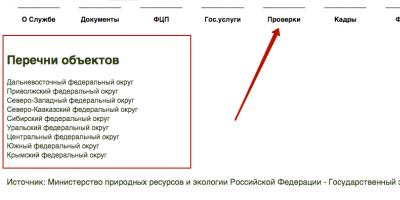Otherwise it may be questioned and deleted.
You can edit this article by adding links to .
This mark is set April 10, 2012.
Gas analyzer- a measuring device for determining the qualitative and quantitative composition of gas mixtures. There are manual and automatic gas analyzers. Among the former, the most common are absorption gas analyzers, in which the components of a gas mixture are sequentially absorbed by various reagents. Automatic gas analyzers continuously measure any physical or physico-chemical characteristic of a gas mixture or its individual components. Based on their operating principle, automatic gas analyzers can be divided into 3 groups:
- Instruments based on physical methods of analysis, including auxiliary chemical reactions. Using such gas analyzers, called volumetric manometric or chemical, they determine the change in the volume or pressure of the gas mixture as a result of chemical reactions its individual components.
- Instruments based on physical methods of analysis, including auxiliary physical and chemical processes (thermochemical, electrochemical, photoionization, photocolorimetric, chromatographic, etc.). Thermochemical, based on measuring the thermal effect of the reaction of catalytic oxidation (combustion) of gas, is used mainly to determine the concentrations of flammable gases (for example, dangerous concentrations of carbon monoxide in the air). Electrochemical ones make it possible to determine the concentration of gas in a mixture by the value of the electrical conductivity of the solution that has absorbed this gas. Photoionization, based on measuring the current strength caused by the ionization of gas and vapor molecules by photons emitted by a source of vacuum ultraviolet (VUV) radiation - a VUV lamp. Photocolorimetric methods, based on the change in color of certain substances during their reaction with the analyzed component of the gas mixture, are used mainly for measuring microconcentrations of toxic impurities in gas mixtures - hydrogen sulfide, nitrogen oxides, etc. Chromatographic methods are most widely used for the analysis of mixtures of gaseous hydrocarbons.
- Instruments based on purely physical methods of analysis (thermoconductometric, densimetric, magnetic, optical, etc.). Thermoconductometry, based on measuring the thermal conductivity of gases, allows you to analyze two-component mixtures (or multicomponent mixtures, provided that the concentration of only one component changes). Using densimetric gas analyzers based on measuring the density of the gas mixture, they mainly determine the content of carbon dioxide, the density of which is 1.5 times higher than the density clean air. Magnetic gas analyzers are used mainly to determine the concentration of oxygen, which has high magnetic susceptibility. Optical gas analyzers are based on measuring the optical density, absorption spectra or emission spectra of a gas mixture. Using ultraviolet gas analyzers, the content of halogens, mercury vapor, and some organic compounds in gas mixtures is determined.
On this moment The most common devices are from the last two groups, namely electrochemical and optical gas analyzers. Such devices are capable of monitoring gas concentrations in real time. All gas analysis instruments can also be classified:
- by functionality (indicators, leak detectors, alarms, gas analyzers);
- by design (stationary, portable, portable);
- by the number of measured components (single-component and multi-component);
- by the number of measurement channels (single-channel and multi-channel);
- for its intended purpose (to ensure work safety, to control technological processes, for control of industrial emissions, for control of automobile exhaust gases, for environmental control).
However, there are devices that, due to their unique design and software, are capable of analyzing several components of a gas mixture simultaneously in real time (multicomponent gas analyzers), while recording the received information into memory. Such gas analyzers are indispensable in industries where it is necessary to continuously obtain information about emissions or monitor a technological process in real time. Analysis is also carried out for components that previously could only be determined by other methods (for example, the total concentration of hydrocarbons (in the Journal of Analytical Chemistry of the American Chemical Society), etc.) in corrosive gases and other aggressive environments. Such devices, depending on the design, are used both as continuous gas monitoring systems in industry and as portable devices for research or environmental monitoring. Modern gas analyzers high class, in addition to reliability and ease of use, have many additional functions, For example.
The device, functionally built on the principles of measuring gas mixtures, allows you to timely determine the excess of dangerous toxins. A gas analyzer is a small device that will warn of the danger associated with the unauthorized release of harmful volatile substances and the appearance of a leak in the pipeline.
We will talk about all types of gas mixture analyzers used in practice. The article we presented describes in detail their design features and operating principle. Taking into account our recommendations, you can choose the most suitable device.
In terms of performance, there are manual and automatic gas analyzers. Hand-held analyzers include absorption models, which use the technology of absorbing a gaseous environment with reagents. Devices that operate automatically usually operate using the technology of constructing the physical and chemical characteristics of a substance.
Almost all gas environment analysis devices that support automatic measurement are, from a methodology point of view, conditionally divided into three groups:
- Chemical reaction analyzers.
- Analyzers of physical and chemical processes.
- Analyzers of physical processes.
Physical methods of analysis performed using chemical reactions are the first to be supported. Here, as a rule, the range of instruments consists of volumetric manometric and chemical apparatus.
Using mobile devices, the volume or pressure of a gas mixture is measured.
A gas analyzer is one of the many models of similar devices that are widely used in a wide variety of sectors of the national economy. Such devices allow for comprehensive control environment
The second group of devices also supports physical methodology, but with the addition of a physical and chemical process.
Such processes may include:
- electrochemistry;
- thermal chemistry;
- photocolorimetry;
- photoionization;
- chromatography.
Naturally, depending on the specific process, the result is in different ways. For example, electrochemistry determines the concentration of a gas mixture based on its electrical conductivity. Or, by measuring the thermal output of the catalytic oxidation reaction, the degree of concentration of combustible gases is obtained.

An example of a device that supports photoionization analysis technology. The model from the “Kolion” series of devices belongs to the category portable structures, is distinguished by ease of use and quality of results
The third group of gas analyzers, built exclusively on physical methods, is represented by magnetic, optical, densimetric and other devices. This group includes, for example, thermal conductometric instruments for analyzing gas mixtures, thanks to which results are obtained by measuring the degree of thermal conductivity of substances.
The basic operating principle and design of gas analyzers allows the analysis of multicomponent mixtures by measuring the concentration level of one component present in the mixture.
Principles of classification of gas analyzers
All currently existing analyzing devices are classified based on their design and technological details. The classification characterizes the specific functionality of gas analysis devices.
For example, an indicator and a signaling device may be somewhat similar, but are classified as different meters. The same applies to leak detectors and gas analyzers.

A small-sized, easy-to-use leak detector is a design that is directly related to gas environment analyzers. Usage similar devices is relevant for various conditions industrial production and household sphere
The design classification determines properties such as mobility and portability. The ability of devices to measure a certain number of components is classified as a single-component or multi-component device.
Similarly with the number of measurement channels, where there is a classification according to single-channel or multi-channel gas analyzers.
Finally, there is one more criterion that shows the specific purpose of the devices. For example, there are gas analyzers for monitoring car exhaust gases, and there are devices that control technological processes.
The most common devices
The most common devices included in the three noted groups are optical and electrochemical models. Their attractiveness is due to the possibility of making measurements in real time.
At the same time, technologically the devices support multi-component analysis with the ability to save results in a memory chip.

An example from the group of optical gas analyzers - devices that are most widely used in a variety of fields. Optical gas environment analyzers have high measurement accuracy
For the industrial sector, such devices are indispensable equipment. Especially where continuous emissions monitoring or process analysis is required.
In such cases, gas analyzers often act as systems for continuous monitoring of the industrial production process and are used in environmental studies. For selection for use in a domestic environment, gas analyzers of the indicated types are also preferable.
Choosing a device for gas analysis
When trying to make a choice of device, it is advisable to decide what task will be assigned to the device. Based on the intended tasks, it is easier to find the required equipment. In addition, the financial issue with the exact selection of equipment will be resolved in favor of the buyer. The fewer parts in the kit, the lower the cost.
The following operating criteria are usually considered when choosing:
- list of supported gases;
- concentration measurement limit values;
- the ability to analyze volume and mass fractions;
- continuous operation time;
- the ability to take measurements at several points at once.
Of course, external performance plays a certain role in the equipment selection process. The presence of protective properties, such as a waterproof housing, blocking the penetration of dust and soot - all this is also important if you count on the longevity of the analyzer.

A mobile model of a gas analyzer, which, in addition to ease of use, is also attractive because it is enclosed in a reliable waterproof case. The dense design of the housing also protects against dust getting inside.
Considering the saturation of the Russian market with foreign-made gas analyzers, one has to choose with an eye to adaptation to domestic conditions. It is clear if the information part of the device is on foreign language, using such a device is more difficult. True, over time you can get used to it.
Any gas analyzer is equipped with working sensors (sensors). As they are used, these elements lose their properties, lose sensitivity and must be replaced.
How frequent replacements should be and how things go with the acquisition of spare parts is also a matter of choice that requires a careful approach. And the warranty period is not the last detail that you should pay attention to.
Review of gas analyzer manufacturers
Among the foreign companies whose products have gained popularity in the domestic market, the German company Testo AG stands out. Produces a wide range of control and measuring equipment, including gas analyzers different types.
The company has existed for more than half a century and over this period of time has learned to create truly high-quality equipment that is sound in all respects.
Specifically regarding gas analyzers: Testo AG supplies the market with devices capable of measuring, analyzing, and providing characteristics of various flue gases formed.

One of the popular analyzer models, marked by the famous Testo AG brand. The company supplies measuring and control instruments in a wide range, the user choice is varied
The domestic company Politekhform-M also provides a decent selection of gas analyzers. This is one of the major manufacturers of instrumentation and analytical equipment. The enterprise has its own experimental and laboratory base, which ensures successful development modern devices.
The range of Polytechform-M is represented by models of gas alarms from the “Signal” and “Sigma” series, including multi-channel designs. The company also produces a series of DMG detectors and other equipment. Among specific examples can be noted: “Signal-033”, “Sigma 1M”, “DMG-3”.

The product of the Russian company Politekhform-M is a multichannel gas analyzer that functionally provides comprehensive control of the gas environment. The company’s devices are valued not only for functionality, but also for reliability.
The St. Petersburg company Informanalitika has developed and produces a series of devices under the “Hobbit” brand. The Hobbit-T series covers a wide range of substances with which the instruments can work and perform analysis.

An effective device from a Russian company from St. Petersburg. The device is worn interesting name"Hobbit-T". Perhaps the Informanalitika company decided to involve it in the development in this way, but the device clearly does not need unnecessary advertising
Almost all types of gases used in industrial production and household sphere, are analyzed using a device developed by a company from St. Petersburg. True, “Hobbit-T” is equipment that belongs to the category stationary devices. This factor somewhat limits user choice.
Another German company, Fessen, through its subsidiary WITT, supplies fast, accurate, multifunctional gas analyzers. Moreover, the choice for the consumer is practically unlimited in terms of the design of the devices.
The WITT assortment is filled with stationary and mobile devices designed for selective or in-line inspection. All types of gases can be analyzed with WITT technology, and the range of possible applications starts from the food sector and ends with metallurgy.
Devices from the Promekopribor company are interesting to choose from. A relatively young Russian company (2009) develops and promotes modern analytical technology for environmental purposes on the domestic market.

Provides interesting, efficient and productive devices domestic market Russian company"Promekopribor". The company produces products for industrial use, but there are also separate developments suitable for everyday use.
It is noteworthy that the company's products fully comply with regulatory documentation for domestic use. The list of the company's products is headed by devices of the Polar and Test series. These are portable multicomponent gas analyzers designed for industrial process control systems.
User-friendly devices household use supplies to Russia Italian company Seitron s.r.l. Italians have been working on the Russian market for more than 15 years and during this time they have managed to supply more than 450 types of control and measuring equipment.
For the domestic sphere, it may be of interest, for example, the development of “Seitron RGDMETMP1” - a gas indicator for natural gas supplied by .

The Italian gas analyzer RGDMETMP1, which has gained popularity in Russia, is a product of Seitron s.r.l. Ideal for use in conditions household. At the same time, the company’s product range is designed for a wide audience of consumers.
This is just one isolated example of Italian equipment. In general, Seitron technology is capable of meeting demand in a wide range of needs. Here you will find, for example, mobile gas analyzers for gas regime adjustment and stationary indicators for gas contamination of premises.
A gas analyzer is an electronic device that is increasingly becoming a necessary accessory for many aspects of modern life. Scientific and technological progress has given people many useful things and products, but at the same time it has brought a lot of harmful production technologies and operating conditions.
Conclusions and useful video on the topic
Using the mobile model as an example, you can understand the operating principle of a gas analyzer:
Accurate analysis of the environment makes it possible to protect nature and make places where people live clean. Analyzers reveal a complete picture of the state of the surrounding atmosphere, make it possible to assess the situation and immediately take action if there are deviations from standardized standards.
Please write comments in the block below, ask questions and post photos. Tell us about own experience in using a gas analyzer. It is possible that your recommendations will be useful to site visitors.
Analysis of gaseous media is a mandatory activity in the work of chemical plants, as well as in many industrial enterprises. Such studies are procedures for measuring one or another component in a gas mixture. For example, in mining enterprises, knowledge of the characteristics of the air in a mine is a safety issue, and environmentalists thus determine the concentration of harmful elements. Such analyzes are not often used for domestic purposes, but if such a task arises, it is best to use a gas analyzer. This is a measuring device that allows you to determine the composition of the gas mixture. At the same time, there are many varieties of this device, which have fundamental differences.
Gas analyzer device
Despite the many design variations of the device, there is a set of basic components that are present in each model. First of all, this is the housing, which contains all the working elements of the gas analyzer. The fact is that such devices require a high degree of protection, so serious requirements must be placed on the outer shell. Almost every device requires power supply - accordingly, the battery can also be considered as an essential part of the device. Next we should move on to a more critical component. This is the primary transducer, that is, the gas analyzer sensor or sensing element that provides direct data for measurement.
It must be said that there are several types of such sensors, including thermocatalytic, infrared and electrochemical. The task of this element is to convert the desired component of the gas composition into an electrical signal. After this, a measuring and display device comes into operation, which processes this signal and demonstrates its indicators in the form of an indication or display. Now it’s worth considering the types of existing gas analyzers.

Thermochemical models
Devices of this type provide a measurement principle by determining the thermal effect of a chemical reaction involving the desired component. As a rule, the oxygen oxidation technique is used in the process. Therefore, such a device can be considered as an oxygen gas analyzer, and the function of catalysts is performed by hopcalite, which is applied to a porous carrier. Measurement of oxidation indicators is carried out using metal or semiconductor thermistors. In some cases, the surface of platinum thermistors also acts as a catalyst. Typically, thermochemical models are used to work with flammable gases and vapors, as well as in the process. It can be used to determine, for example, the oxygen content of hydrogen.
Magnetic devices
In this case we are also talking about devices aimed at determining oxygen. A gas analyzer of this type monitors the susceptibility of magnets relative to the medium under study depending on the oxygen concentration in it. It would seem that this component can be determined by other types of device, but there is one feature. The fact is that a magnetic gas analyzer is a meter that is capable of determining the concentration in complex mixtures with higher accuracy. It is also necessary to distinguish between magnetomechanical and thermomagnetic devices. In the first case, the device measures the force acting in a non-uniform magnetic field on a sensitive element placed in the medium under study - for example, a rotor. The readings will depend on the medium temperature and pressure. The operating principle of thermomagnetic models is based on a convention that arises when a gas mixture interacts with inhomogeneous temperature and magnetic fields.
Pneumatic models

Such devices operate based on measuring viscosity and density. To do this, data on the hydromechanical properties of the flow are analyzed. It must be said right away that there are three options for such devices: throttle, jet and pneumoacoustic. A throttle gas analyzer is a device with a converter that measures when a gas mixture passes through it. Jet-type models measure the dynamic characteristics of the pressure of the gas mixture flowing from the nozzle. Typically, devices of this type are used when working with nitrogen and chloride compounds.
The pneumoacoustic device includes two whistles with approximately equal frequencies of about 4 kHz. The first whistle passes the analyzed gas through itself, and the second - the composition for comparison. As a result, the air gas analyzer allows you to compare vibration frequencies, converting the indicators into pneumatic vibrations using an amplifier. A type is used to ensure the signal is supplied.
Infrared models

The operating principle of such gas analyzers is based on the selective absorption of vapor and gas molecules by infrared radiation. It is important to consider that the device provides for the absorption of those gas mixtures whose molecules contain at least two different atoms. The specificity of molecular spectra in various gases also determines the increased selectivity of such devices. For example, there are regular and dispersive versions of the converter. A dispersive gas analyzer is a device that uses radiation generated by monochromators, that is, prisms. Conventional representatives of this class use non-monochromatic radiation, provided due to the features of optical circuits. For this purpose, light filters, special radiation receivers and other components are used. Also, infrared gas analyzers can use non-selective radiation detectors - in particular, thermopiles, bolometers and semiconductor components.
How to use the device?
It is important for the user of the device to become familiar with the display or other information output device included with the device. As a rule, modern displays display the date, as well as several fields for data on the composition of the gas mixture. The instructions for the gas analyzer in a specific configuration will allow you to obtain complete information about the meaning of the fields and channels of the device. Actually, control of the device functions also depends on specific model. As a rule, it is sufficient to activate the device while in a gaseous environment. Next, when the threshold concentrations of the desired component are reached, the device will give a signal. In some models, light indication is also possible. At the same moment, the main lines about chemical composition gas mixture and the properties of a specific component for which the device was configured.
Device verification

Like any gas analyzer it needs verification. This procedure will allow you to evaluate the technical condition, performance of the device, as well as its compliance. Most often, portable gas analyzers suffer from failures in performance, so they should be serviced more often. So, how is verification carried out? The procedure is performed on a special testing stand. It begins with inspecting the device, testing the replacement of faulty elements. This is followed by calibration activities and making the necessary settings.
Direct verification involves the use of a device to assess the concentration of a certain component in a compressed gas cylinder. That is, special mixtures are used, with the help of which gas analyzers are checked for analysis of a specific component.
In modern industrial conditions, the work area - the place where people are periodically or constantly during a work shift - can be elevated to dangerous territory.
In connection with technological processes or during emergency air releases working area pollute toxic, flammable and explosive gas components.
Gas analyzers– devices with the help of which the composition of a gas mixture is determined, both qualitative (which gases are present) and quantitative (how many certain gases are in the mixture).
First of all, fire, explosion and chemically hazardous industries are equipped with gas analyzers, as well as mines where there are accumulations of firedamp (methane).
Gas analyzers must be used before carrying out hot work in basements and wells, as well as to certify workplaces in hazardous industries.
Application for personal protection
Portable gas analyzers small sizes, which workers in hazardous industries are supplied, can be considered primary personal protective equipment.
They promptly signal an increased content of harmful impurities in the air, at which point you should leave the work area or use. The gas analyzer device is shown in the photo:
Device operation method
Handheld analyzers, which are activated by the operator, are based on the fact that individual gaseous components are absorbed by special reagents.
The air from the production area is passed through an absorber, which binds a certain gas. After this, the initial volume of the mixture decreases. By reducing the volume, it is calculated how much gas bound by the absorber was initially contained there. Depending on the qualifications of the operator, measurement takes five to ten minutes.
Operation of automatic analyzers continuous action based on physical and chemical processes, as well as their combination.
The physical principle of measuring the result of an auxiliary chemical reaction ensures the operation of volumetric manometric or chemical analyzers. In these devices measures how much the volume or pressure of a gas mixture has changed after its components have entered into certain chemical reactions.
The following devices have a physico-chemical principle of operation, combined with a physical one:


The following automatic gas analyzers have purely physical principles of operation:


Varieties
In addition to differences in the method of operation (manual or automatic) and principle of operation, gas analyzers for air in the working area are divided into types:
- Stationary. Such devices automatically monitor gas concentrations. In an industrial version, if the permissible content of a dangerous gas component is exceeded, they give light and sound signals, and also turn on ventilation and other safety systems;
- Portable. Designed to determine the concentration of gas impurities in different places production area;
- Portable. Individual devices. They are small in size and weight, and measure the concentration of harmful impurities directly where the worker is located.
In addition, in terms of the amount of measured impurities, these devices are single- and multi-component, and by the number of channels (sensors or sampling points) – single- and multi-channel.
Selection rules
To choose the right device for monitoring the air in the work area, you must first of all: proceed from the list of impurities that need to be determined. In addition, it has value hazard class of impurities: There are modifications of devices for explosive and non-explosive environments.
Sample models of industrial gas analyzers are presented in the photo:

Depending on the assigned tasks - this is general control, local or individual, choose stationary, portable or portable models of gas analyzers. And finally, devices with different operating principles have their own inherent Advantages and disadvantages.
So, thermochemical devices They have a low cost, but at the same time a short service life of the gas analyzer sensor, low speed and sensitivity, and a small range of measured concentrations. Thermochemical analyzers used primarily for air control production area for the content of flammable gases, for example, CO.
Electrochemical analyzers occupy an average price position. They have high sensitivity, a wide range of detectable substances, and low energy consumption. At the same time, they are large in size and difficult to maintain.
Optical instruments have excellent performance, high selectivity and sensitivity. Their measurement range covers almost the entire spectrum possible contamination. At the same time, the cost of optical gas analyzers is the highest.
Instructions for use and storage
Installation, use and verification of work area air gas analyzers must be carried out in strict accordance with the conditions specified by the manufacturer.
Storage requirements vary by analyzer device. For example, electrochemical devices are stored in supplier packaging in a heated storage facility at temperatures from +5ºС to +40ºС and withstand high humidity.
Optical devices allow temperature range from -50ºС to +50ºС, however, they are sensitive to sudden changes in temperature and humidity, as well as to dust, aggressive vapors and other harmful impurities.
The guaranteed shelf life is usually 12 months, and the warranty service period does not exceed one and a half years.
Adequately selected, serviceable and correctly used gas analyzer provides accurate and timely information on the air composition of the work area. This information may be not only necessary, but also vital for the employee.
In conclusion, we suggest watching a video review of how the FP11.2K gas analyzer works:
The instruments used to perform gas analysis are called gas analyzers. They are manual and automatic. Among the former, the most common are chemical absorption ones, in which the components of a gas mixture are sequentially absorbed by various reagents.
Automatic gas analyzers measure any physical or physico-chemical characteristic of a gas mixture or its individual components.
Currently, automatic gas analyzers are the most common. Based on their operating principle, they can be divided into three main groups:
- Devices whose operation is based on physical methods of analysis, including auxiliary chemical reactions. With the help of such gas analyzers, changes in the volume or pressure of a gas mixture are determined as a result of chemical reactions of its individual components.
- Devices whose operation is based on physical methods of analysis, including auxiliary physical and chemical processes (thermochemical, electrochemical, photocolorimetric, etc.). Thermochemical ones are based on measuring the thermal effect of the reaction of catalytic oxidation (combustion) of gas. Electrochemical ones make it possible to determine the gas concentration in a mixture based on the electrical conductivity of the electrolyte that has absorbed this gas. Photocolorimetric methods are based on the change in color of certain substances when they react with the analyzed component of the gas mixture.
- Devices whose operation is based on purely physical methods of analysis (thermoconductometric, thermomagnetic, optical, etc.). Thermoconductometry is based on measuring the thermal conductivity of gases. Thermomagnetic gas analyzers are used mainly to determine the concentration of oxygen, which has high magnetic susceptibility. Optical gas analyzers are based on measuring the optical density, absorption spectra or emission spectra of a gas mixture.
Each of the mentioned methods has its pros and cons, the description of which will take a lot of time and space, and is beyond the scope of this article. Manufacturers of gas analyzers currently use almost all of the listed methods of gas analysis, but electrochemical gas analyzers are most widely used, as they are the cheapest, most versatile and simplest. Disadvantages of this method: low selectivity and measurement accuracy; short service life of sensitive elements exposed to aggressive impurities.
All gas analysis instruments can also be classified:
- by functionality (indicators, leak detectors, alarms, gas analyzers);
- by design (stationary, portable, portable);
- by the number of measured components (single-component and multi-component);
- by the number of measurement channels (single-channel and multi-channel);
- for its intended purpose (to ensure work safety, to control technological processes, to control industrial emissions, to control vehicle exhaust gases, for environmental control).
Classification by functionality.
- Indicators are devices that provide a qualitative assessment of a gas mixture based on the presence of a controlled component (according to the “many - little” principle). As a rule, information is displayed using a line of several dot indicators. All indicators are on - there is a lot of component, one is on - there is not enough. This also includes leak detectors. Using leak detectors equipped with a probe or sampler, it is possible to localize the location of a leak from a pipeline, for example, refrigerant gas.
- Alarms also provide a very rough estimate of the concentration of the controlled component, but at the same time they have one or more alarm thresholds. When the concentration reaches a threshold value, alarm elements are triggered (optical indicators, sound devices, relay contacts are switched).
- The pinnacle of the evolution of gas analysis devices (not counting the chromatographs that we are considering) is the gas analyzers themselves. These devices not only provide a quantitative assessment of the concentration of the measured component with indication of readings (by volume or mass), but can also be equipped with any auxiliary functions: threshold devices, output analog or digital signals, printers, and so on.
Classification by design.
Like most control and measuring instruments, gas analysis instruments can have different weight and size indicators and operating modes. These properties determine the division of devices by design. Heavy and bulky gas analyzers, usually designed for long-term continuous operation, are stationary. Smaller products that can be easily moved from one object to another and quite simply put into operation are portable. Very small and light - portable.
Classification according to the number of measured components.
Gas analyzers can be designed to analyze multiple components at once. Moreover, the analysis can be carried out both simultaneously for all components, and one by one, depending on design features device.
Classification by the number of measurement channels.
Gas analysis devices can be either single-channel (one sensor or one sampling point) or multi-channel. As a rule, the number of measurement channels per device ranges from 1 to 16. It should be noted that modern modular gas analytical systems allow you to increase the number of measurement channels almost to infinity. The measured components for different channels can be either the same or different, in an arbitrary set. For gas analyzers with a flow-type sensor (thermoconductometric, thermomagnetic, optical absorption), the problem of multipoint monitoring is solved using special auxiliary devices - gas distributors, which ensure alternate supply of a sample to the sensor from several sampling points.
Classification by purpose.
Unfortunately, it is impossible to create one universal gas analyzer that could be used to solve all gas analysis problems. Just as it is impossible, for example, to make one ruler to measure both fractions of a millimeter and tens of kilometers. But a gas analyzer is a much more complex measuring device than a ruler. Different gases, in different concentration ranges, are controlled in different ways, by various methods and measurement methods. Therefore, manufacturers design and produce devices to solve specific tasks measurements. The main tasks are: control of the working area atmosphere (safety), control of industrial emissions (ecology), control of technological processes (technology), control of gases in water and other liquids, control of the mine atmosphere, control of vehicle exhaust gases (ecology and technology). In each of these areas, even more highly specialized groups of devices can be distinguished. Or you can enlarge it, which is what we did - in our catalog you will find 5 main groups of gas analysis instruments:
- gas analyzers, gas detectors and safety systems and labor protection,
- gas analyzers and control systems for technological processes and emissions industrial enterprises,
- gas analyzers for analysis water purification,
- mine gas analyzers and mine atmosphere control systems,
- gas analyzers for engine emission control.








